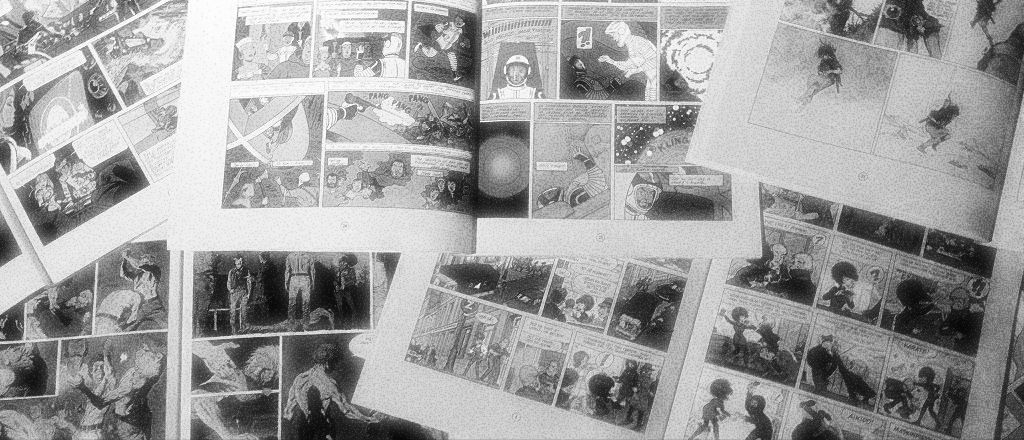Back in the 70’s, way before the first Star Wars movie, I started collecting comics in the form of graphic novels in A4/C4 size, i.e. the size of a full letter. They were a bit bigger than the standard comics magazine, with stiff high quality color pages inside a solid carton front and back page. Graphic novels of this kind was extremely popular all over Europe especially at that time, and typically had about 48 quality pages. Asterix, The Adventures of Tintin, The Smurfs and a ton of others used pretty much the exact same format. They all had a small back edge with vertical text and a number – a tiny hardcover; ideal for collecting and finding it again on the shelves. It would often take more than a year before the next graphical novel in most of these limited series was published. I collected the novels in my favorite series as they were released and read them many times over during the years to come.
It was quite a different culture than with the superhero magazines on the other side of the pond. Not that we didn’t have those – we certainly did and we also loved them – but we Europeans always held our graphical novels in very high esteem. Each novel was usually an entire story with a start and an end (rarely they continued) and they almost always adhered to precisely those 48 pages. Only a few select titles had more, and then still a static number that it then adhered to, like 62 pages for The Adventures of Tintin. This ensured a good and predictable chunk of time reading it, and that for me was part of the charm.
When you take a superficial glance at these European graphic novels, you might consider them to be children’s tales in the line of Donald Duck or Scooby-Doo, but that would actually not be fair. The European market spanned an impressive amount of series and there was something for everybody. A lot of the series that used a more childish style than the superhero comics often revealed themselves to have surprisingly complicated stories and vivid dialog. Some of the deliberately more childish novels displayed the same charming mix that many Pixar movies are renowned for today – different things for both children and adults to enjoy. Other series with a more adult theme might still be drawn in a childish and naive style, but the stories, the drama and the dialog rarely held back because of that. The heroes of the European graphic novels were often mortals – detectives, cowboys, reporters, you name it. It was refreshing to follow the adventures of a hero you could compare yourself to. Of course there were exceptions, like Benoît Brisefer, but most of the time our heroes were very vulnerable indeed. Instead of throwing themselves through buildings and trucks, it was more about exploration, adventure, traveling, mystery – and lots of funny gags.
It was a great part of my childhood from way before the first home computers, and a lot more could be written about of this very European phenomenon. About how the France and Belgium were the dominating creators of among the best graphic novels. About the distinct styles they used, the powerful stories, and the different kind of dangers our lesser mortal heroes faced. There would probably be enough material to fill up several blog posts (maybe even a book) but I think this will have to suffice for now as an introduction to our graphic novels. Future blog posts will go into detail about some of my favorite comic series.
You can read more about Franco-Belgian comics on Wikipedia and TV Tropes, and you can read about The Ninth Art on Animation World Network.



Almost afraid to ask 😉 but I take it you’re not so much into gag-based stuff like… what you might at best know as “Flip og Flop”?
Loved that comic as a kid. Especially the first two issues where they meet each other, how one of them loses his hair and is a master at disguise, and the humor is still novel.
The later issues turns into too much routine and it loses a lot because of it, but even there it can occasionally come up with gems. Like the one where the bald guy follows a set of footprints up the wall and on the ceiling, then he stops and ponders how it’s possible for him to walk on the ceiling, and then of course he immediately drops to the floor.